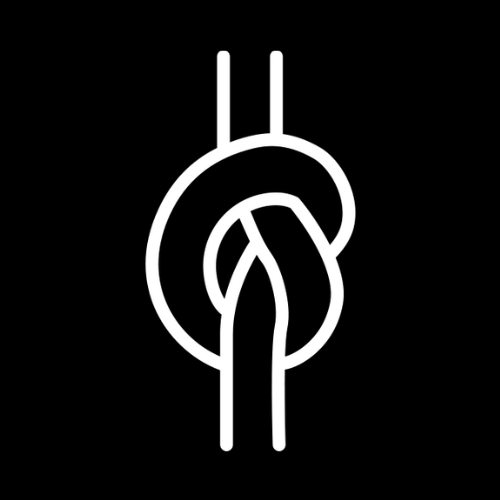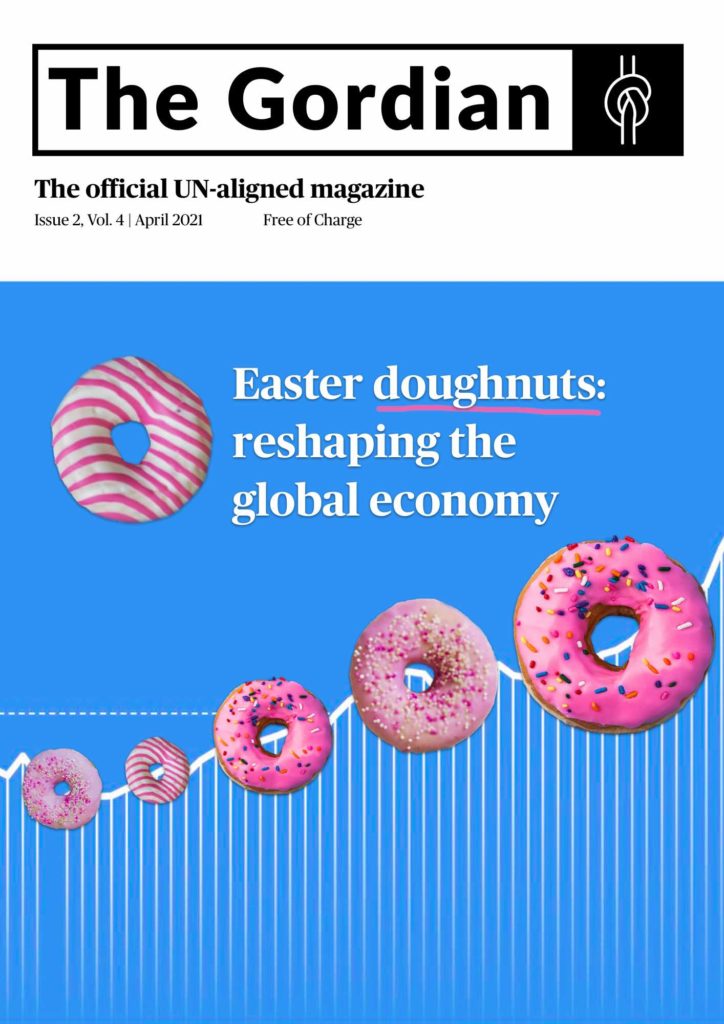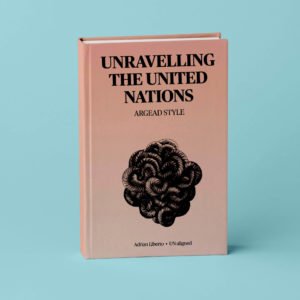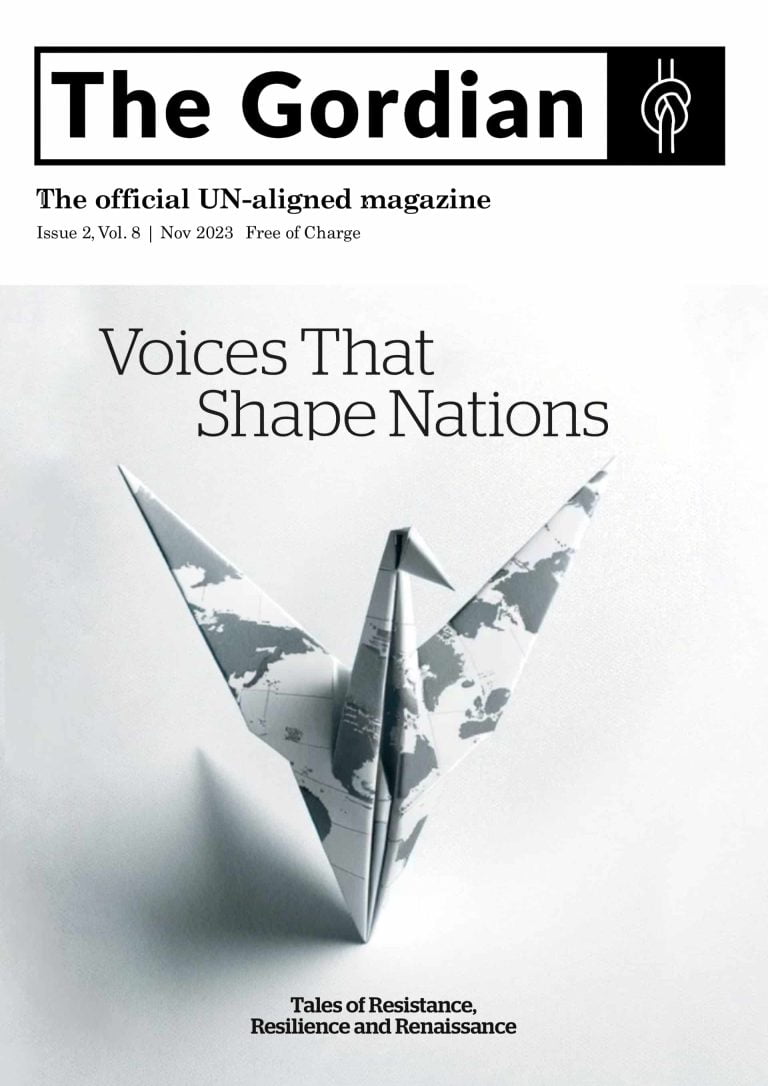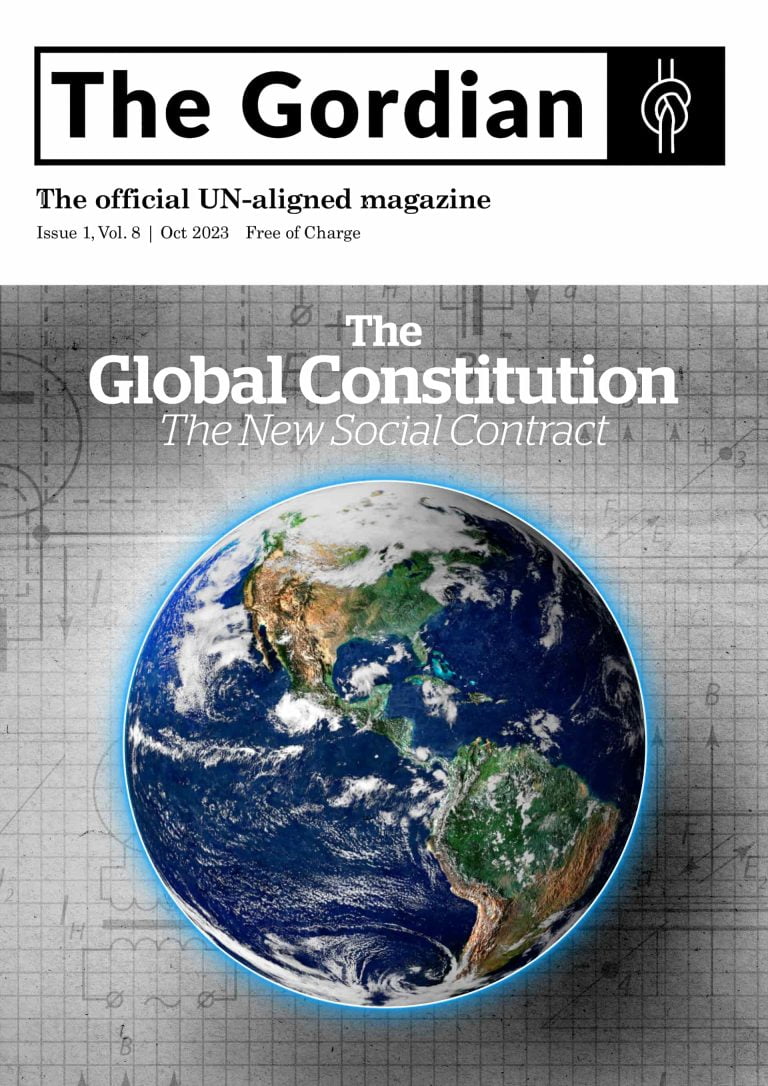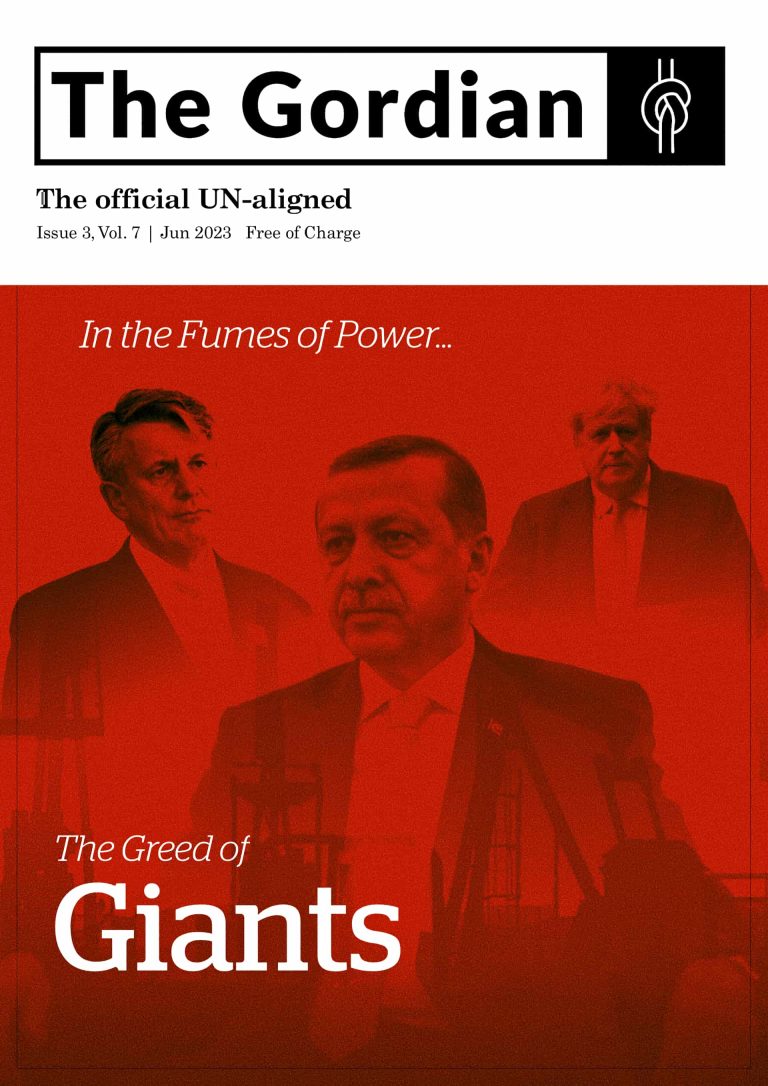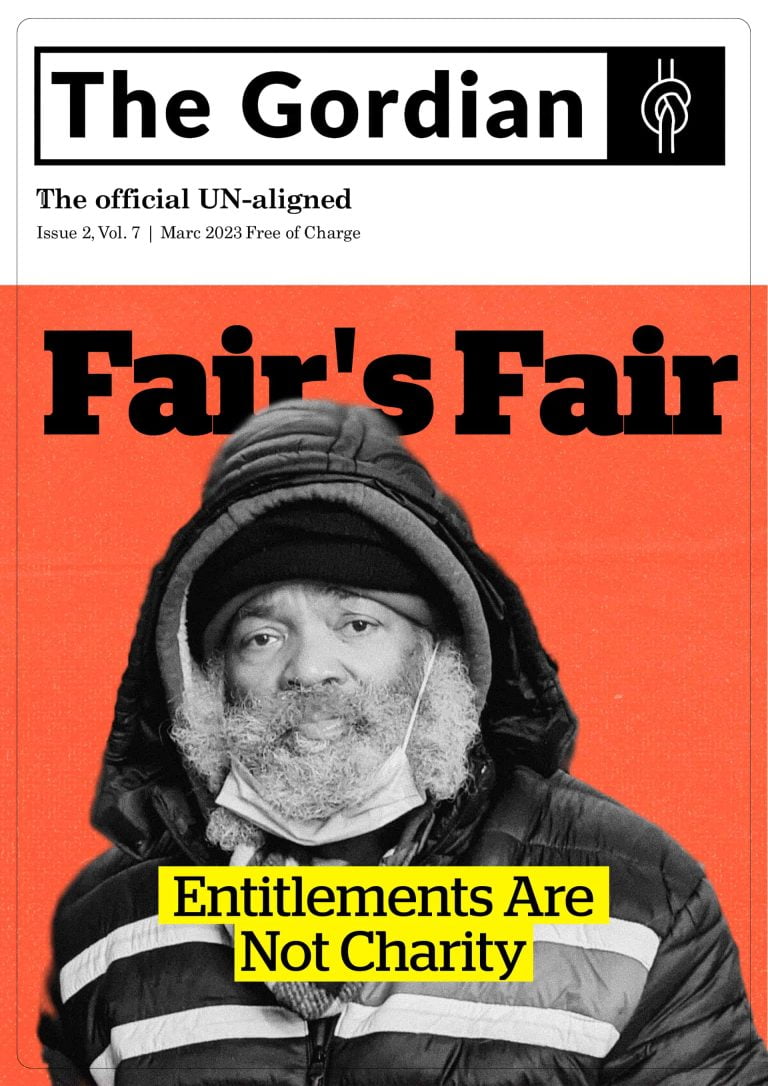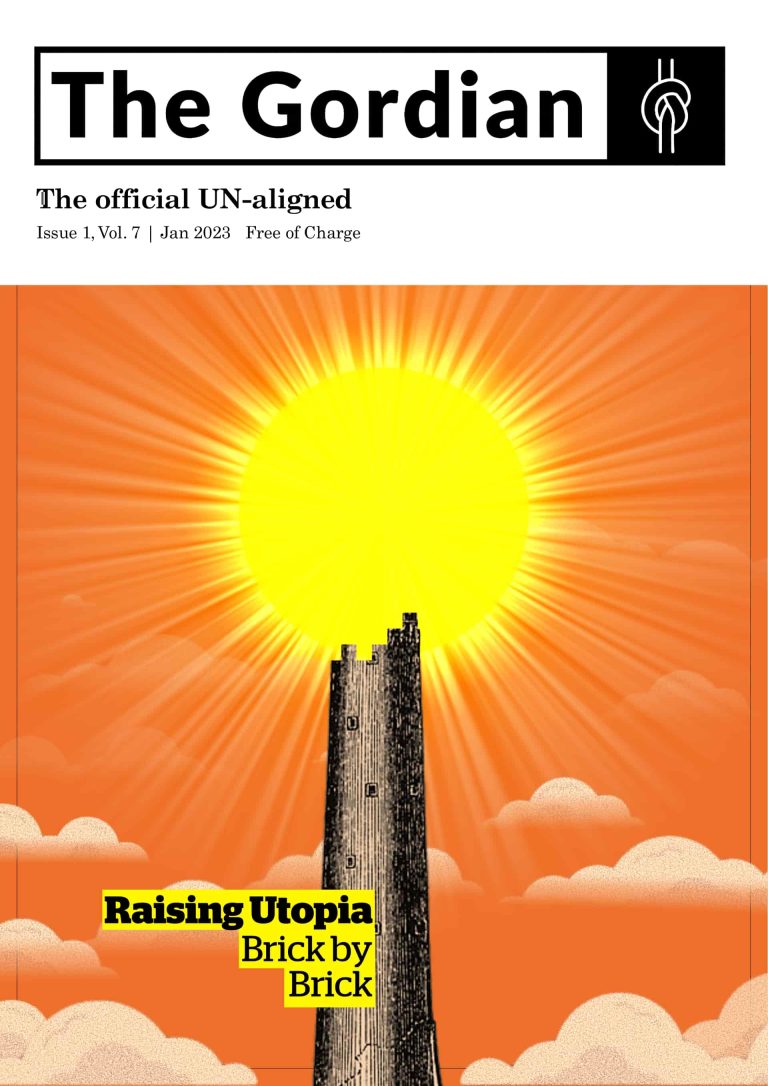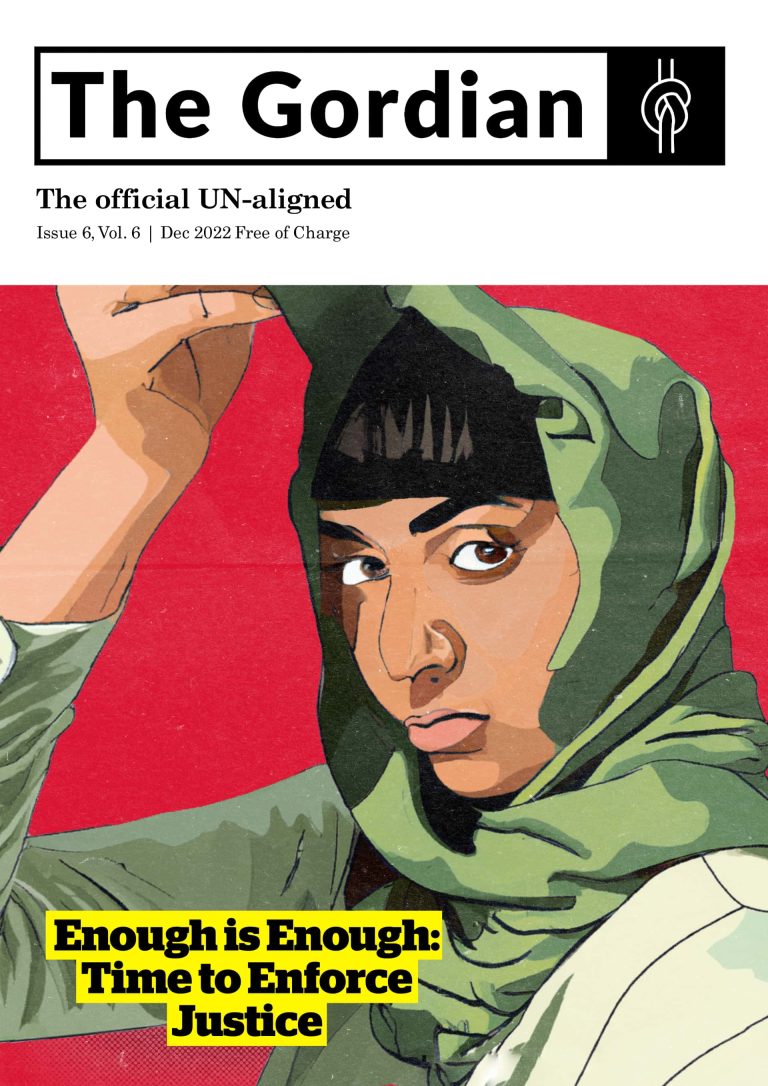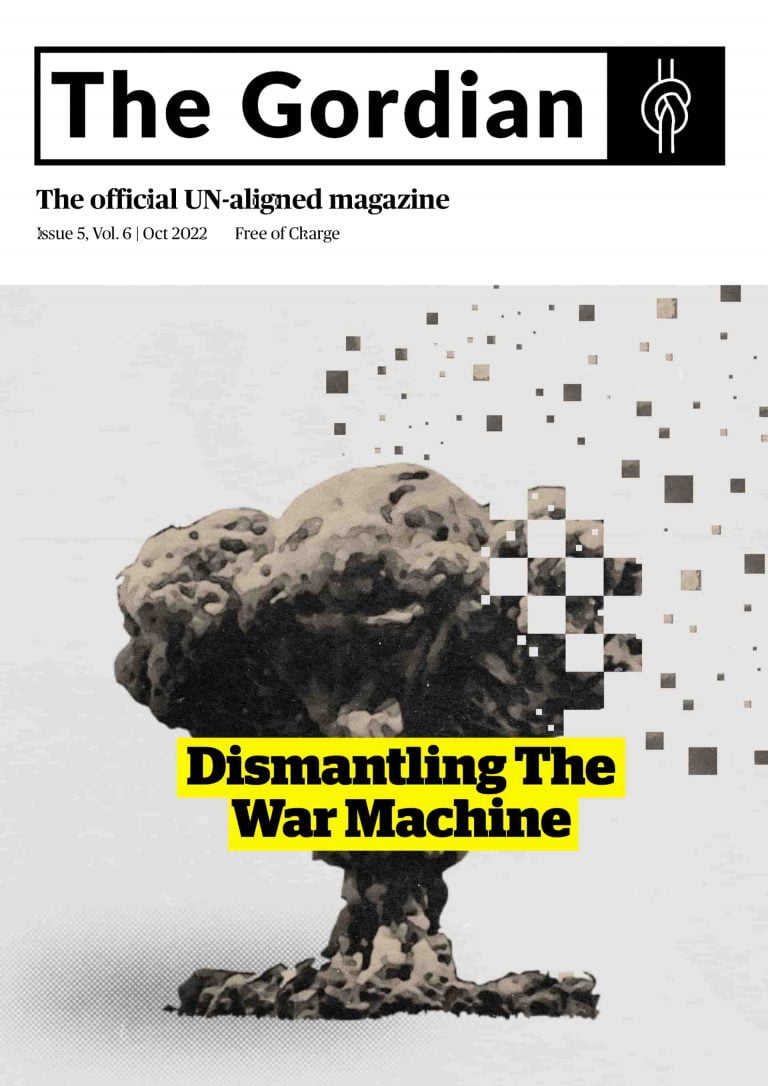The Doughnut Economy: “humanity to thrive sandwiched between its inner and outer limits”
By Adrian Liberto
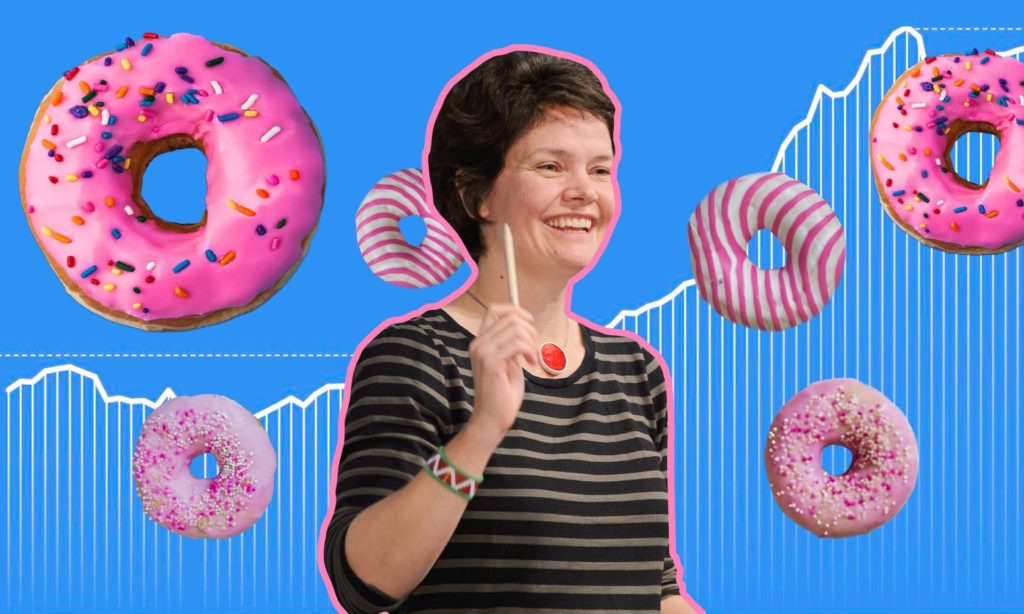
Read this article in Italian (Leggi questo articolo in italiano) →
Over the last few centuries, economics has been dominated by a doctrine of perpetual growth. The prevailing idea was that there were no limits to how much we could exploit the earth and its resources. Today we know better, but sadly, we still behave as though we did not. As Kate Raworth states in her book Doughnut Economics: Seven Ways to Think Like a 21st-Century Economist (2017), the citizens of the next few decades are being cultivated in a mindset that is obsolete for the 21st century as it is “rooted in the textbooks of 1950, which in turn are rooted in the theories of 1850.” This, she points out, is proving to be a veritable disaster.
Kate Raworth first introduced her visual representation of what a healthy economy could look like in a 2012 OXFAM discussion paper titled: A safe and just space for humanity: can we live within the doughnut? The doughnut represented the safe space where humanity could thrive sandwiched between its inner and outer limits, namely our social and planetary boundaries:
“Achieving sustainable development means ensuring that all people have the resources needed – such as food, water, health care, and energy – to fulfil their human rights. And it means ensuring that humanity’s use of natural resources does not stress critical Earth-system processes…”
Raworth’s 2017 book develops the idea further. On the one hand she highlights how past economic theory has failed to grasp the full picture, while on the other she cautions that the picture is not a static one and as such requires a flexible and evolving approach. The seven “ways” she explores are simple, well researched, grounded and achievable.
1. Changing the goal
Raworth’s first point concerns Gross Domestic Product (GDP) which is generally accepted as the standard measure to assess value created through the production of goods and services in a country during a certain period. “GDP is a cuckoo in the economic nest” as a measure of progress because it tends to throw all other considerations out of the nest. Moreover, since its introduction 70 years ago, it has bound economies to a never-ending race. Indeed, the momentum of unbridled growth provides governments with certain perks, such as the increasing of tax revenues without the need to resort to the unpopular move of raising taxes, and the reduction of unemployment (Okun’s Law). However, the collateral damage is not worth the price. Onwards and upwards in no longer a fitting metaphor for the economy: “Instead of pursuing ever-increasing GDP, it is time to discover how to thrive in balance…” Reining in indiscriminate growth in order to preserve our social fabric and planetary equilibrium is not a luxury, but a matter of survival. The image presented by the doughnut highlights the boundaries that need to be respected in order to ensure stability wellbeing.
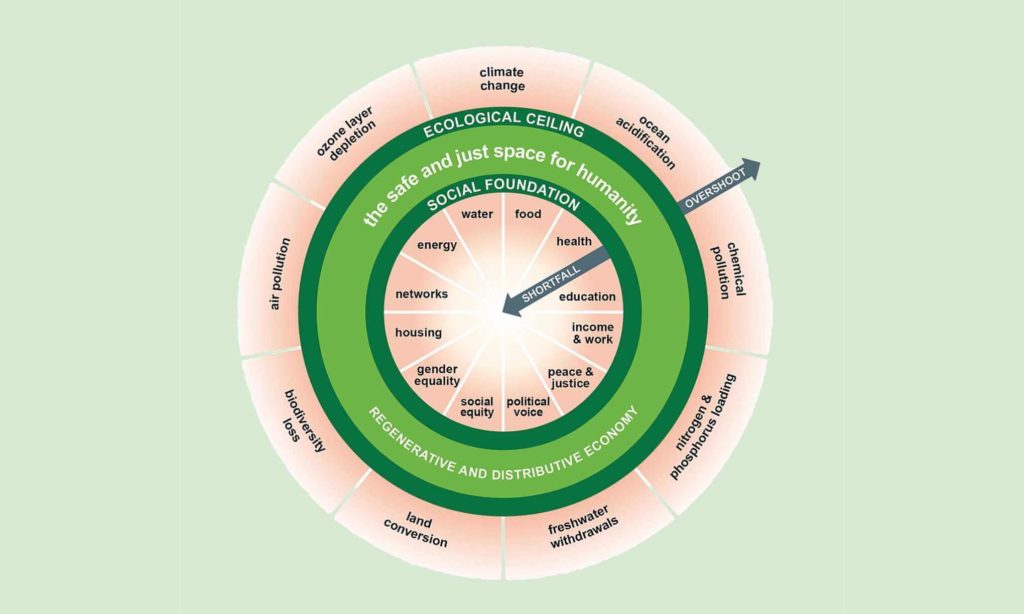
Though simple, this image requires effort and creativity to thrive, as well as the consideration of other factors, such as population, distribution, aspiration, technology and governance. GDP does not even come close to securing this safe and just space:
“In a few decades’ time we will look back, no doubt, and consider it bizarre that we once attempted to monitor and manage our complex planetary household with a metric so fickle, partial and superficial as GDP.”
2. Seeing the bigger picture
Seeing the bigger picture involves transcending limited economic models that distort a clear perspective. Paul Samuelson’s Circular Flow diagram, for instance, presents a rolling economic picture that appears “closed and complete”, as one dynamic feeds into another. In reality, however, it is “utterly flawed” and misleading as so many factors are left out of the equation:
“It makes no mention of the energy and materials on which economic activity depends, nor of the society within which those activities take place…”.
This is a serious problem because putting our faith in these models “has taken us to the brink of ecological, social and financial collapse.” Raworth offers a wider perspective including unpaid work that often makes everything else possible.
3. Nurturing human nature
One of the main criticisms against the Doughnut Economy is that a dramatic change of human nature would be necessary for it to work, as people would have to “magically” cease to be acquisitive and competitive (Branko Milanovic). The fact is that Raworth is far from naïve in this respect. She nevertheless rightly points out that “human nature is far richer”. Portrayals of people as self-interested, calculating and inflexible become self-fulfilling prophecies. Indeed, human integrity is easily eroded. Simply encouraging people to see themselves as consumers rather than citizens, for instance, can produce very detrimental results.
The price had gone, but the guilt hadn’t come back
One of Raworth’s examples of how human values can be easily undermined concerned an experiment at a school in Israel. Fines were introduced when parents turned up late to pick up their children, but instead of reducing lateness, it increased it, as parents saw the fine as a sort of payment. When the experiment was terminated, the late pickups rose further still: “the price had gone, but the guilt hadn’t come back. The temporary marketplace had, in essence, erased the social contract.” The same erosion takes place when financial incentives are used to promote decent behaviour. Inversely, cultivating human nature and emphasising trust in the community and pride in one’s cultural heritage produces very positive results.
4 & 5. Getting savvy with systems and designing to distribute
In order to progress in the right direction, it is necessary to abandon “economy’s elusive control levers” and start focusing on an “ever-evolving complex system.” Economics is a very particular sort of science, it ticks differently. When Alfred Newton lost his savings to the 1720 South Sea Bubble he lamented: “I can calculate the movement of the stars, but not the madness of men…”. An effective approach, therefore, involves keeping a finger on the economic pulse.
This system must also be inclusive. Sadly, economics is still cavalier about its moral obligations and well over two thousand years behind medicine when it comes to “honouring the ethics of its own profession.” These obligations should involve service to human prosperity, respecting the autonomy, engagement and choices of communities, minimising risks and working in a spirit of openness, and ongoing evaluation. In a word, recognising that inequality is not an “economic necessity” but “a design failure.” History has taught us that economic growth will not reduce inequality by itself; it needs to be managed:
“Today’s economy is divisive and degenerative by default. Tomorrow’s economy must be distributive and regenerative by design.”
6. Creating to regenerate
It is difficult to get a man to understand something when his salary depends on his not understanding it.
And here’s the hub: people power. Our author highlights how the trickle-down economy just does not work. The Kuznets Curve (ꓵ) which predicts that developing market forces first increase inequality but then decrease it, is a myth. Only last year, another OXFAM Report, titled Time to Care, confirms the fact: “Economic inequality is out of control. In 2019, the world’s billionaires, only 2,153 people, had more wealth than 4.6 billion people.” Despite the facts, however, the powerful few cling to the fallacy. Many people actually believe that rather than offering protection, hard earned policies like minimum wages and labour unions are barriers that need to be dismantled. As Upton Sinclair put it: “It is difficult to get a man to understand something when his salary depends on his not understanding it.” Equally worrying is that the Kuznets illusion is being applied to other issues, such as the environment. Even if the Environmental Kuznets Curve were true, Raworth points out, the reality is that it would not be a solution as we would not survive its peak.
Several regenerative ideas are put forward. These include taxing non-renewable resources rather than labour, giving people a stake in robot technology, tiered pricing (higher prices for non-essential use) and redefining money so that rather than gaining value for sitting pretty, it actually lost value over time. Positive initiatives are, of course, taking root all over the globe, many of these, Raworth explains, also involve open-source technologies and ideas. The COVID-19 crisis we are facing just goes to prove how devastating patents can be. Big Pharma has recently blocked developing countries from producing their own vaccines even though the companies in question cannot even keep up with demand and honour their commitments. Letting people die is not what progress is about. What is required is an economy that is regenerative by design; one that overcomes the take-make-use-lose throwaway dynamics:
“This century needs economic thinking that unleashes regenerative design in order to create a circular – not linear – economy, and to restore humans as full participants in Earth’s cyclical processes of life.”
7. Being agnostic about growth
What Raworth means here is weaning ourselves from our addiction to growth and approaching it cautiously:
“Today we have economies that need to grow, whether or not they make us thrive: what we need are economies that make us thrive, whether or not they grow.”
This last statement sums up the vision; one that is certainly within our reach despite humanity’s current collision course. Tokenistic or half-way measures, however, are no longer enough. More stringent measures are needed than those that even organisations like the United Nations propose. Nevertheless, the question we need to ask ourselves now is not “how on earth?”, but “why on earth not?”
An optimistic vision and a workable one
“Doughnut Economics sets out an optimistic vision of humanity’s common future: a global economy that creates a thriving balance thanks to its distributive and regenerative design.” UN-aligned endorses the Doughnut Economy. Its benefits are clear and its flexible roadmap a safe trajectory for the foreseeable future. Kate Raworth’s book is easily available and you can also watch her explain the Doughnut Economy herself by tuning in to her TED Talk: A healthy economy should be designed to thrive, not grow.
No doubt, implementing the necessary changes will not be easy, particularly when monster industries (like the meat and dairy industries) will need to be targeted, but the only other alternative is destruction, pure and simple.
GDP is an impostor, so why are we still using it to measure happiness?
By Ariana Yekrangi
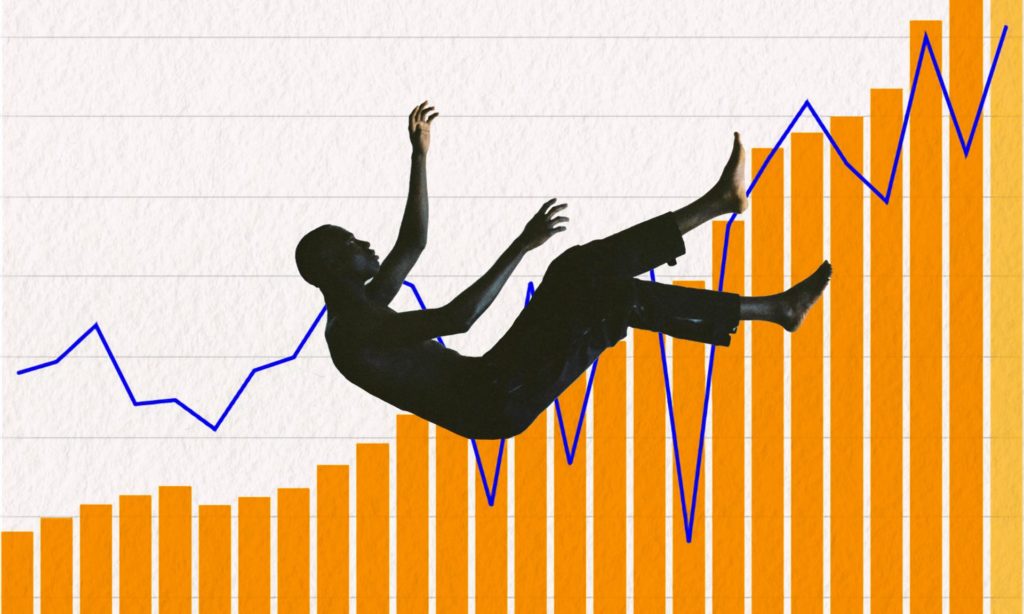
Read this article in Italian (Leggi questo articolo in italiano) →
GDP is not a suitable measurement for happiness or welfare. It sucks. Assessing the economy using GDP is destroying our planet and the global community and the United Nation’s sustainable development solutions network (SDSN) need to find other suitable alternatives.
Since 2011, the SDSN, an initiative operating under the auspices of the United Nations, has been publishing a yearly report on how happy the world is. Embarking upon this fundamentally subjective and unquantifiable quest is no easy task and although the SDSN has significantly improved its methods to measure happiness throughout the years, it still has a long way to go before becoming perfect. This year the report used a host of different criteria to grade the happiness of a nation, these included: gross domestic product per capita (GDP), social support, healthy life expectancy, freedom to make your own life choices, generosity of the general population and perceptions of internal and external corruption levels.
Amongst the six variables that the report uses to compute happiness, Gross Domestic Product per capita (GDP) stands out. As the United States’ disappointing 17th rank in the report so bluntly demonstrates, happiness is more than smiles and high-yielding bonds. Owning more guns, having more money in your bank account or rallying around a flag will not, necessarily, bring one happiness. Who knew…
Hmm, but isn’t an ever-growing and flourishing economy quintessential to our happiness and wellbeing? Well, it’s complicated, let me explain.
To put it in plain language, Growth Domestic Product or GDP simply refers to the amount of stuff a country produces, this includes consumer spendings, money businesses invest and the government’s expenses. In capitalist thinking, GDP is the single most important indicator to capture economic activity. Unfortunately, the concept falls short of providing a suitable measurement for people’s wellbeing, mental health and prosperity.
Being a happy country and having an unusually high GDP figure are oxymorons
The economy must come to a balance with the living world in a safe and equitable way. We have been told for so many years that GDP growth is a proxy for human well-being: “We need to grow the economy to improve people’s lives”, you probably heard every other politician and their grandmother say. Now brace yourselves, it turns out this is an utter lie. GDP was never designed to measure human well-being, it was invented to measure the welfare of capitalism and the fact that we have all come to consider GDP growth as an appraisal of welfare of humans rather than the welfare of capital is an astonishing ideological coup on the part of capitalism.
In the real world, high GDP numbers don’t translate to prosperity, but to over-consumerism, stark inequality, the destruction of our environment and thus a lower quality of life. It’s easy to see why being a happy country and having an unusually high GDP figure are oxymorons.
GDP signifies the rate at which we run our death cult, oh I mean “economy”
When people think of capitalism they tend to think of businesses, markets, trade and so forth, but this isn’t quite correct. The aforementioned has been around for thousands of years whereas capitalism is only about 500 years old. What makes capitalism distinctive, however, is that it is organised around and dependent on perpetual growth, ever increasing levels of extraction and production.
But the language of growth sounds so compelling, it sounds so natural and so good, why should anyone be against it.
GDP does not only yield growth, but also projects the rate and speed in which we dig our own graves
Most economists would suggest that the economy and GDP – yes, they mean capitalism – needs to grow at a “healthy” rate of about 3% a year. Although this may seem like a small number, you have to remember that this is an exponential growth. 3% of annual growth means doubling the global economy every 20 years, throughout a single human life, this rate will multiply by a factor of 10. This wouldn’t be a problem if GDP growth was plucked out of thin air, but it is not, it is very tightly coupled to resources and energies available on our planet.
Oddly enough, the more we grow the economy, the more energy the economy requires and the more difficult it will become to roll out sufficient renewable energy to capacitate to meet the demand. GDP does not only yield growth, but also projects the rate and speed in which we dig our own graves. To be proud of higher GDP numbers is to celebrate a death-cult we call an economy and using it as a measurement for happiness is just plain wrong.
Moving beyond GDP
As the report demonstrates, we know that it is possible to have a very high level of happiness and prosperity with low levels of GDP. Let’s take the USA as an example. The country has a GDP capita of about 50,000 dollars per year, making it one of the richest in the world. Costa Rica on the other hand has 80% less GDP per capita compared to the United States, but yet it possesses a longer lifespan, higher happiness indicators and many better social benchmarks in different parts of the society. How do they do it you ask?
Simple, by focusing the economy on primarily human needs and ensuring that people have access to universal healthcare, education and social security. That’s what is needed for human flourishing.
GDP must be abandoned not only as an objective for welfare, but also as an evaluation of our economy. If a country wants to improve education, healthcare or wages, they should not have to worry about the effects it may have on GDP. Focus must be put on the topic at hand directly instead of magically expecting everything to get better simply by increasing GDP figures.
Decommoditise the parts of the economy that are needed for human wellbeing.
In his book Prosperity Without Growth, Tim Jackson identifies services such as health and education as relying more on people and less on resources and therefore crucial to a happier and an environmentally sustainable future.
In a degrowth scenario, as portrayed in the Doughnut Economical Model, we will be scaling down key parts of the economy, and we can have an honest conversation about what those are, that are ecologically destructive and often absolutely unnecessary to human needs. For example, advertising, gun and private jet production and so on.
Unemployment rates will rise, but we won’t let it be an issue
As we go about this, there will be less labour required in the economy and, naturally, unemployment rates will rise. Normally, this would be a disaster, but we won’t let it. We can shorten the working week and redistribute existing labour more evenly so that everyone has access to the livelihoods they need in order to lead flourishing lives. This, of course, will go along with the access to the leisure activities people need to engage in caring activities, building better relations with their communities, becoming politically involved and so on.
Additionally, a universal basic income would organically ensure that all workers in declining industries are supported, even if that has to mean planting trees or doing absolutely nothing. Remember, there is no scarcity of income, there is inequality. Of course, it is obviously not the case that we can all just stay at home. Material goods must be produced unless we are to revert back to hunter-gatherer lifestyles. But ultimately, by reducing inequity we can take the pressure of the need to grow the economy and instead focus on us, on our education, our ambitions, our mental health.
Bhutan knows better: The Gross National Happiness (GNH) index could present a suitable alternative.
The very idea of measuring happiness to help guide public policy was proposed by Bhutan. Through a United Nations General Assembly resolution in July 2011, the country encouraged everyone ” to give more importance to happiness and well-being in determining how to achieve and measure social and economic development”. The country places an incredibly high value on happiness and wellbeing.
The Gross National Happiness, an alternative to GDP, is a term coined by the Fourth King of Bhutan, Jigme Wangchuck, in the 1970s. The concept implies that sustainable development should take a holistic approach towards notions of progress and give equal importance to non-economic aspects of wellbeing.
The concept of GNH has often been explained by its four pillars: good governance, sustainable socio-economic development, cultural preservation, and environmental conservation. The GNH Index is a single number index developed from 33 indicators categorized under nine domains. It’s also remarkably thorough, containing 148 questions, with lengthy sub-questions. GNH could potentially offer some strengths that GDP lacks.
Bottom line
In order to put people and their welfare first, we have to know what matters to them, perhaps it is time for the United Nations’ Sustainable Development Solutions Network (SDSN) to find a suitable alternative to replace GDP.
This article aims to highlight the shortcomings of GDP regarding human welfare. It does not cover all the issues relating to the subject, such as how it counts tragedies as economic bonuses, or the fact that it ignores how money is divided up.
We are facing a profound dilemma: to reject growth or to risk a total economic and social collapse
By Ayten Aydin
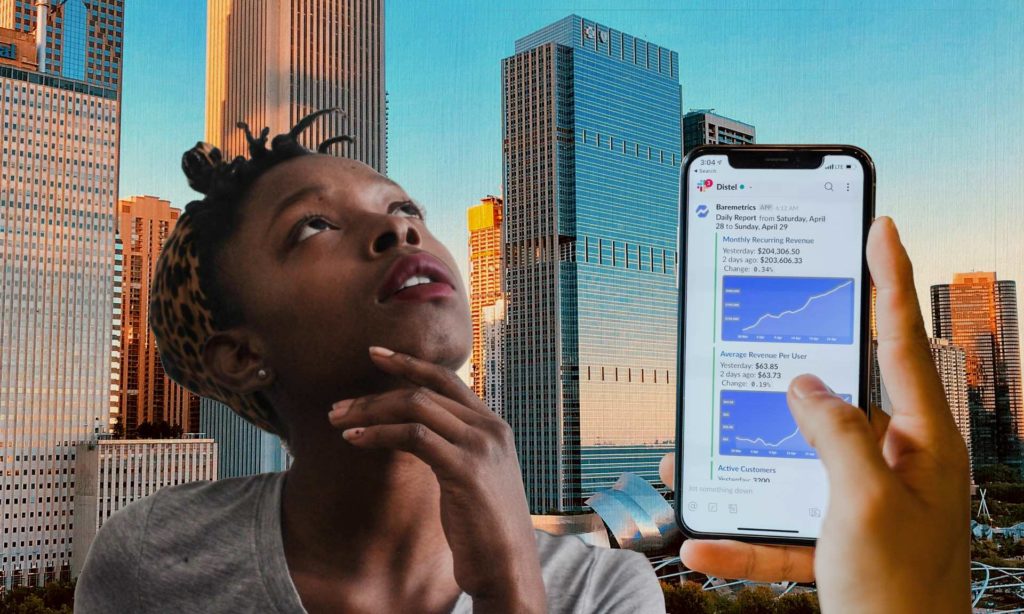
Transcending simplistic assumptions
Society is faced with a profound dilemma. To reject growth is to risk economic and social collapse. To pursue it relentlessly is to endanger the ecosystems on which we depend for long term survival. This delusional strategy has reached its limits. Simplistic assumptions that capitalism’s propensity for efficiency will stabilise the climate and solve the problems of resource scarcity are almost literally bankrupt.
Our own relentless search for novelty and social status lock us in an iron cage of consumerism. Affluence itself has betrayed us. We lose the shared prosperity that we sought in the first place. We can however create and recreate the social world. This is where a social transformation is needed. The starting point for all of this lies in a vision of prosperity as the ability to flourish as human beings within the ecological limits of our finite planet.
To realise that well is part of the ability to give and receive love, to enjoy the respect of our peers, to contribute constructively to society, to have a sense of belonging and trust in the community, to help create the social world and find a credible place in it. In brief, an important component of prosperity is the ability to participate meaningfully in the life of society. This is the wisdom of the sages from time immemorial. But material wealth has made it harder and harder to see where real wealth lies. On the other hand, asking people to give up material commodities is like inviting a kind of social suicide.
Growth with a sense of shared meaning
Frugality may seem hard to us, but its linguistic roots do not lie in sacrifice and hardship
Consolidating the things that matter to us and reducing unnecessary commitments increases our resilience to external shocks and can even improve our quality of life. Frugality seems hard to us, but its linguistic roots do not lie in sacrifice and hardship at all, but in the Latin word “fructus”. Being a good ‘fruit’ means being honest and temperate, dedicated to long-term flourishing; traits that are vital for human beings and for the earth itself.
Now our challenging mission is to reconstruct growth from the bottom up and fully participate in the task of transforming society with our sense of shared meaning and purpose; to continuously create and materialise the dream for a prosperous future. This should make prosperity possible beyond consumerism. We learn and appreciate how to be happy by consuming less. A core element here is the revitalisation of the notion of public good; to review our sense of common space and common good for a shared purpose of well-being, both individually and communally.
A different kind of economy is essential for a different kind of prosperity. The ability to share in a common endeavour and yet to pursue our potential as individual human beings. Through creative working and living we create the social world and find a credible place in it. As Steve Jobs used to say: “the crazy people matter”. I add to it 3 C’s, as they are “curious, creative and courageous” people.
Perhaps the moment has arrived – if it is not too late – to be wise and to act accordingly, thus dismantling the myth of economic growth in order to define it with new parameters for the economic and productive activities. Only in so doing can we spawn another culture that can be more conducive to wholesome living on Earth. Thus, a new type of learning and understanding is urgently needed if we are to proceed consciously towards harmony and wellbeing for all.
A joint effort
It is thus urgent and necessary to anticipate and ascend to the future and accordingly create a positive change. Hence, it is in our self-interest to work together to preserve and enhance our quality of life, as well as giving it a deeper meaning. Thus, the primary challenge that confronts us is to discover and develop the skills we need, and based on that, to think and act collaboratively. This is the way evolving societies develop proactively towards a sustainable future for life on earth.
This will be a new era in human history, whereby, through a profound social transformation, conscientious and ecology-conscious human societies will emerge. This newly born society may then remove all the roadblocks to human becoming, thus strengthening the dwindling human values of respect, justice, ethics, benevolence, reciprocity, communication and sharing with all human beings as well as with all living systems. Last but not least, the focus will be on caring for Nature and the environment with empathy and love towards a sensible transformation of individual human beings and societies.
Funding and Fiscal Responsibility of the United Nations
By Adrian Liberto
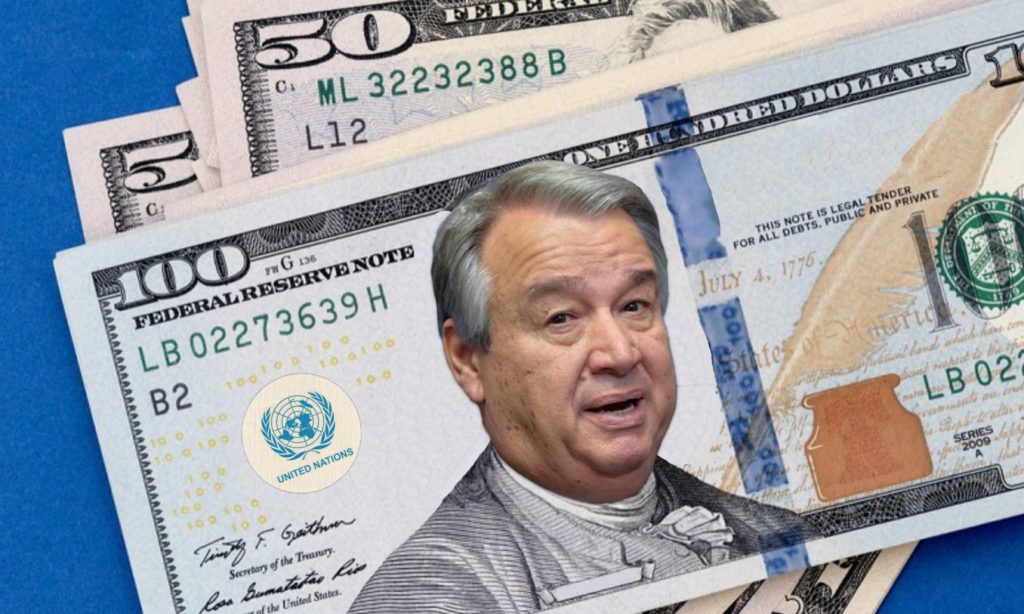
The following is an extract from UN-aligned’s new publication that highlights the shortcomings of the United Nations with details that cover its foundation, structure and monumental failures. You may be surprised at the murky facts that this book will bring to your attention.
A thorough critique of the UN finances would therefore involve a massive amount of time and investigation, which exceeds the remit of this work. Nevertheless, even without specific details regarding UN spending, some of its weaknesses in this regard have been manifestly exposed from within the organisation. The two main criticisms concern the manifold overlaps in UN operations and the inflated salaries of UN personnel. These issues go hand in hand and can be summed up in one word: bureaucracy. They give rise to an unnecessary multiplying of well-paid personnel and a replication of resources, which means that while employees and their administrative needs receive the lion’s share of the allocated funds, identified problems are left with the crumbs. Of course, decision-making is also impaired, which in turn affects efficiency in general. Speaking at a UN Reform Event in September 2017, Secretary General António Guterres summed up the situation without mincing his words:
“Someone recently asked what keeps me up at night. My answer was simple: bureaucracy. Fragmented structures. Byzantine procedures. Endless red tape. Someone out to undermine the UN could not have come up with a better way to do it than by imposing some of the rules we have created ourselves. I even sometimes ask myself whether there was a conspiracy to make our rules exactly what they need to be for us not to be effective.”
His aim is a “nimble” United Nations, free from “cumbersome and costly budgetary procedures” and “duplicative structures”, with more emphasis on “delivery, and less on bureaucracy.” Guterres’ assessment echoes previous reports on reform, but as former Australian Foreign Minister Gareth Evans, referring to his own attempts at improving the organisation, put it, trying to advance reform in the UN was a “quixotic and unproductive” venture.
Would you like to learn more about the United Nations? Well good news, our new publication, Unravelling The United Nations, Argead Style, can help you with that.
You can support us by purchasing a digital or printed copy of the book from your local Amazon Store:
• Buy on Amazon.com →
• Buy on Amazon.co.uk →
• Buy on Amazon.de →
• Buy on Amazon.it →
• Request a free copy (limited number available) →
On The Road: The story behind Santa Maria church in Valle Porclaneta
By Carla Pietrobattista
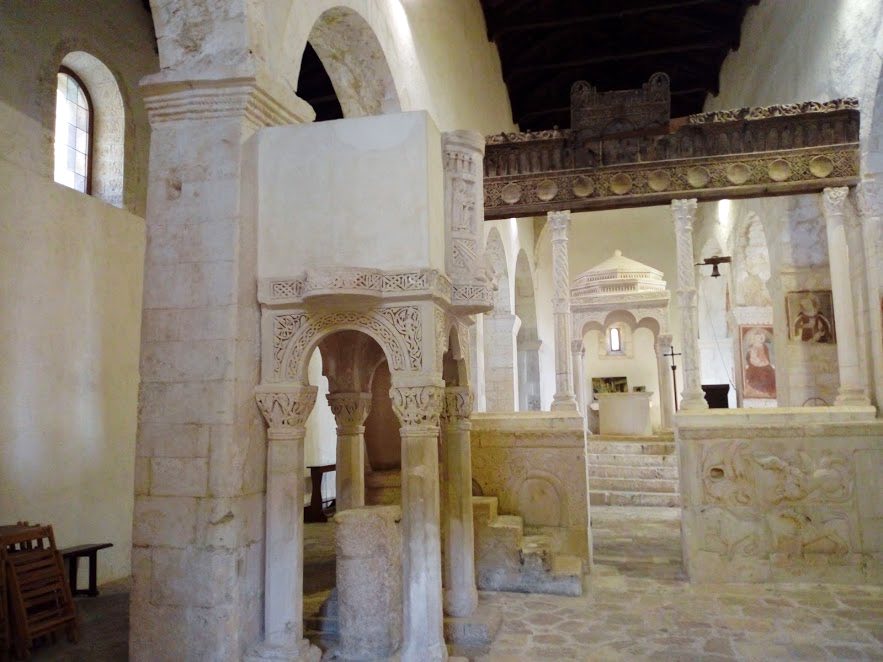
Read this article in Italian (Leggi questo articolo in italiano) →
The perfect balance and harmony that govern the elements present in the church of Santa Maria in the Porclaneta in Rosciolo, Abruzzo, Italy, tends to arouse one’s curiosity with regards to its origins and history. Although much has already been said by historians and art experts, I firmly believe there are still many secrets hidden in the iconography the church is steeped in.
Unexplored secrets
Until now the elements that have found greater exposure in the historical and stylistic examination are the sculptural ones. However, I believe that the paintings in the church of Santa Maria, despite the simplicity of execution of some of them, still have much to reveal. This is particularly true of the triptych placed at the end of the right nave of the church. Here, the Virgin and Child is flanked by St. Michael holding scales in his hands and a saint with a long liturgical robe grasping a chain: St. Leonard of Noblat (also known as San Leonardo de Noblac, from the Latin ‘nobiliacum’).
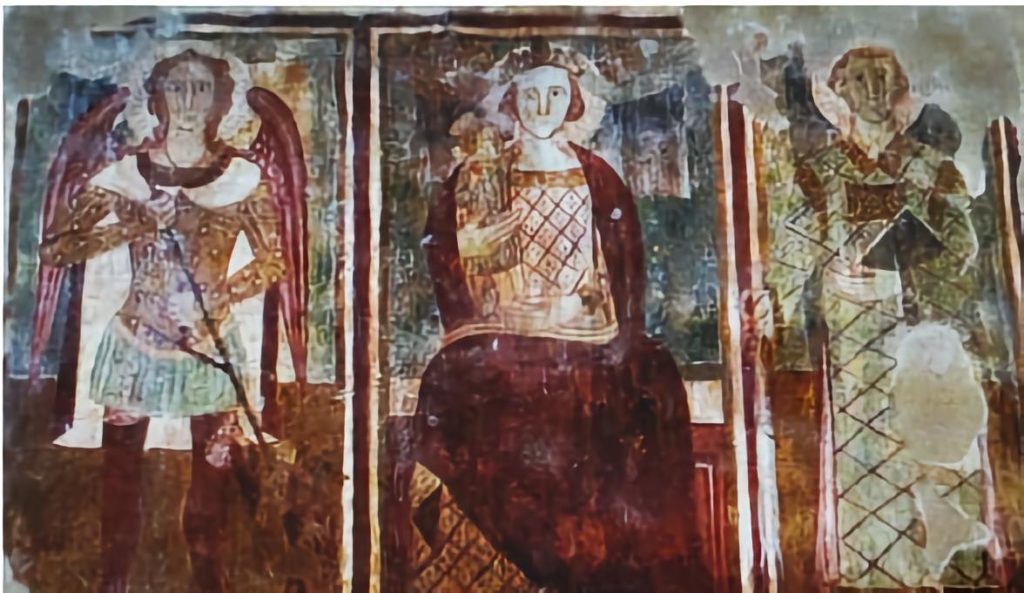
Many, myself included, have above all studied the most well-known iconographic elements in the triptych, such as the objects in the hands of Michael the archangel and the position of the Child in the arms of the Virgin, without paying due attention to the third figure of the fresco, St. Leonard. This oversight is probably due to the fact that the saint, despite having been the centre of a popular cult around Italy during the Middle Ages, is today mostly unknown. The facts concerning him and above all the historical implications connected to them are extremely interesting.
The journey of research to get to know this character better, like any course of study, must begin by taking small steps. It is therefore necessary to start by examining the historical sources on St. Leonard to try to justify and understand the spread of the cult. Leonard, a native of Gaul, lived most of his existence as a hermit. The dates concerning him lack historical certainty, however, most likely he was born in Limoges in 496, while his ‘dies natalis’ is celebrated on November 6 (probable date of the saint’s death: November 6, 545).
Leonard’s links to Clovis
Of noble origins, he had King Clovis, a friend of Leonardo’s parents, as his godfather. Clovis, the king who is remembered for having definitively renounced the pagan rites in France, played a key role in Leonard’s life and was subsequently in some way responsible for the inspiration of some of the aspects of his cult and of the iconographic elements attributable to the saint. Clotilde, the wife of Clovis, was the first person according to the hagiographic information on the life of Leonard to receive a miraculous intercession with God thanks to the holy hermit while the latter was still alive. It is said that Leonard’s prayers prevented the death of Clotilde and the baby (and therefore heir) she was carrying, saving them both from problems at the time of delivery. This fact subsequently determined the choice of Leonardo as protector of pregnant women. The cult for the saint was not limited to this and he was also invoked by farmers as a defender of livestock and shepherds.
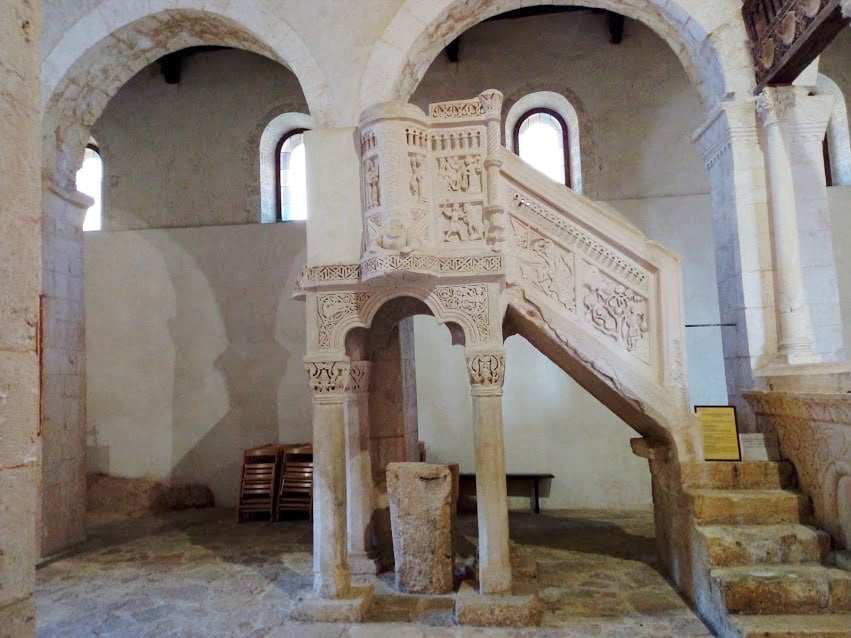
Moreover, St. Leonard is venerated as the protector of prisoners, especially those who had been unjustly incarcerated. This last aspect is also linked to Clovis. In fact, the king, perceiving Leonardo’s sanctity, granted him an extremely important task, namely the possibility of freeing those who he perceived as having been unjustly incarcerated. This faculty justifies the constant presence of chains in the frescoes that depict him and for this reason he is also the patron of chain builders.
Justice in the years in which the saint lived was rather arbitrary. The early Middle Ages and the following centuries may not have been as dark a historical moment as common opinion believes, but they were marked by disputes, power struggles and longing for prestige. These elements often led to unlawful arrests that were carried out simply to increase the personal power of some.
Moving forward from the historical context
Having made these brief, but necessary, hagiographic clarifications, it is now possible to examine the fresco of Santa Maria in Valle Porclaneta. The dating proposed by scholars places it roughly at the beginning of the 15th century. In the triptych, the saint wears a long liturgical robe, with one hand holding a book that could be a sacred text, but could also represent the deed issued by Clovis to free prisoners not guilty of crime, in his other hand he holds the chains. Leonard, who as we have said, was invoked by women in labour, in a historical context in which childbirth was among the main causes of death among young women, is depicted next to the Virgin, whose birth according to the scriptures took place in extreme environmental conditions.
The other element of the triptych is St. Michael the Archangel in the guise of a psychopomp, that is with a balance in his hands used to weigh the souls of the dead. One of the most immediate and shared interpretative readings of the fresco is the one that sees behind the images represented a hope, that of the faithful, who through the intercession of Leonardo, Maria and Michele believed they could break the chains of sin in order to overcome the test of the weighing of the soul by Michele. I firmly believe that this hypothesis, although entirely plausible and immediate, is not the only one. In fact, the chains must not be seen only as a symbol of sin, but mainly as iconographic attributes identifying Leonardo and his role as liberator of prisoners; precisely for this reason they cannot and must not be the only interpretative solution of the fresco.
The reading of the images must take into account every aspect of the cult and every prerogative of the subjects depicted. The fact that Michele and Leonardo shared the same role should not be considered secondary, both were protectors of the shepherds and in Rosciolo the local economy was widely characterized by pastoralism. For this reason, these saints were particularly dear to the local population. Mary completing the triptych was a further guarantee of protection and salvation for the faithful.
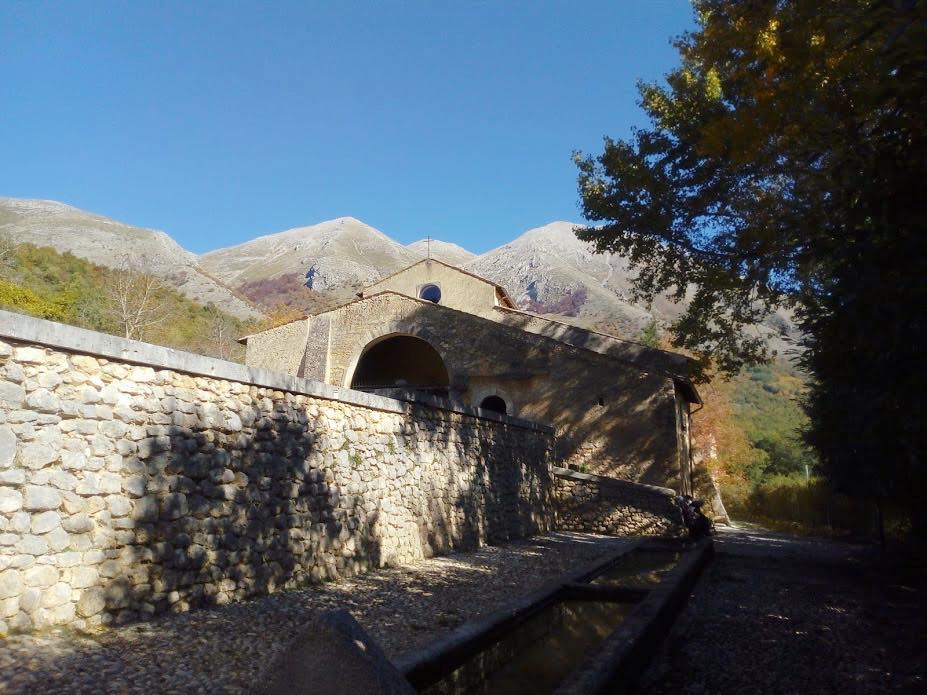
Numerous and natural exchanges
The interpretations proposed so far explain the possible reasons for the fresco, but do not help to understand how a cult, born in a geographical area so far from Abruzzo, ended up in Rosciolo. The hypothesis shared by many historians, which sees the transmission of this and other forms of religiosity to the influence exercised by the Normans when they had control of southern Italy, certainly remains valid, even for me. However, in my opinion, we must be careful not to think of the acquisition of elements typical of foreign people solely as a cultural imposition. It is necessary to look more introspectively and think about the numerous exchanges, which we could define as completely natural, that exist between two different cultures when they come into contact with each other. Very often there is a tendency to imagine the past and the places hosting the ancient works as crystallized, closed and suspended in a bubble. Obviously, this is not the case; exchanges, travels and contacts also took place in the past. Often, among the people who more than others were on the move, we find shepherds. The Normans also fall within the discourse linked to pastoralism and the movement of shepherds, because when they incorporated Abruzzo and Puglia to the Kingdom of Sicily, they gave new vitality to transhumance.
During the winter, the shepherds resumed their pastoral tracts, with greater guarantees of control, starting from Rosciolo, they rejoined the royal pastures to reach southern Italy. The journeys of the shepherds had several points in common with those of pilgrims who, after the reconquest of sacred sites by Christian knights, had begun to move in large numbers to make their journeys of faith. Since the final destination of these routes was, in most cases, the Holy Land or Santiago de Compostela, a stop in Rome to pray at the burial place of Peter, prince of the apostles could not be missed. From here the faithful then left to embark for southern Italy to conclude their journey.
Faith in the period we are examining was not so much a spiritual and inner phenomenon, but rather something that people felt the need to externalise in order to make it as tangible as possible. For example, during pilgrimages, the faithful were recognisable through concrete signs such as personal clothing or the transport of sacred images that were held up as trophies to be displayed. The shepherds who left our lands, therefore, would be able to meet and observe the faithful, including numerous Normans on their way to Santiago de Compostela, often following a path that started from Noblat, at the tomb of Leonard. To understand how important and frequent pilgrimages to and from Noblat were in the mentality and religiousness of the Normans, just think that Richard the Lionheart, King of England and Duke of Normandy, went directly to Leonard’s tomb as soon as he was freed from captivity in order to thank him for the freedom he regained.
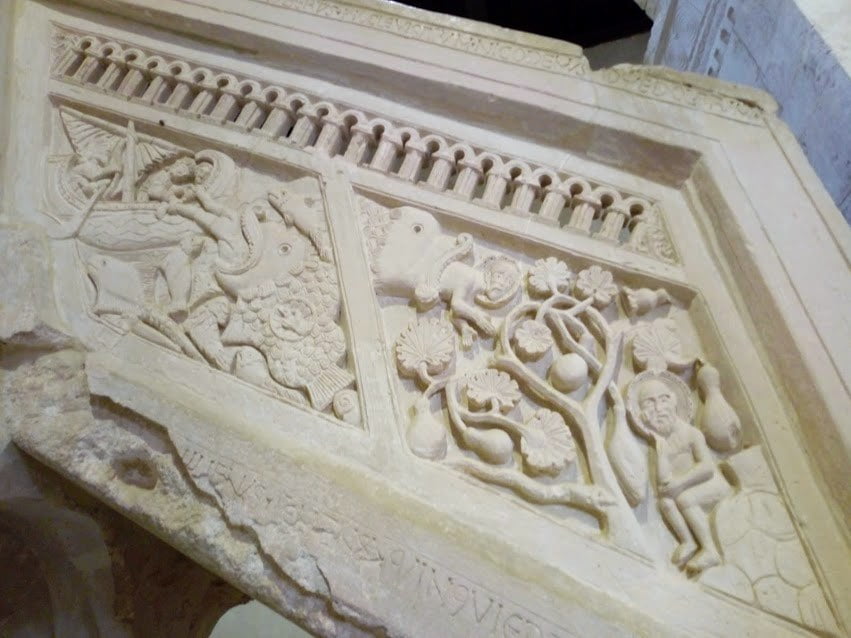
Collaboration between art history and anthropology
Surely the habits, encounters and ways of living, which according to my interpretation, are behind the choice of the subjects depicted in the triptych, belong more to an anthropological than a historical sphere. Nevertheless, I believe that the collaboration between art history and anthropology, although not always considered valid because it may not be entirely verifiable, can prove to be an excellent key to interpreting works of art and the cultural contaminations within them. The oral tradition and the persistence of traditions handed down from generation to generation, can hence be of help in filling any gaps or absences of official documents by providing new and interesting insights into the study of the forms and contents of art.
• Carla Pietrobattista was born on November 10, 1978, in Avezzano in a culturally stimulating family. She grew up and still lives in a characteristic town in the province of L’Aquila: Magliano dei Marsi. She is the Grandniece of Father Panfilo Pietrobattista da Magliano, founder and first president of Saint Bonaventure in America. She had a humanistic education culminating in a degree from the University of Perugia in June 2004, discussing a thesis in Christian archeology on the Celimontana Church of Saints John and Paul. Carla worked as an art expert and is currently teaching and working on cultural assignments to promote the artistic culture of her territory.
Your guide to T.S Eliot poems – April is the cruellest month
By Alex Liberto
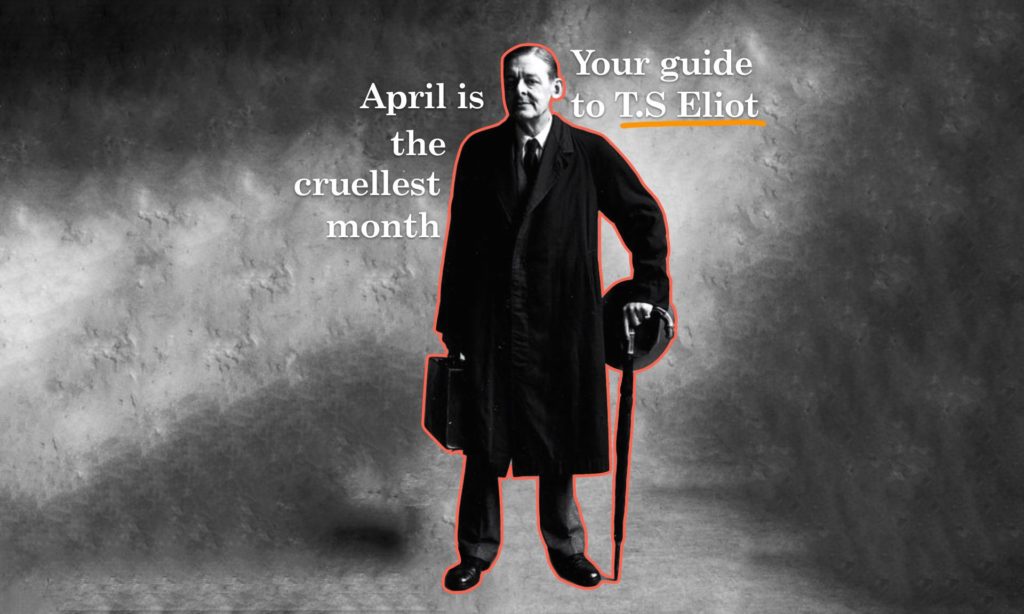
Read this article in Italian (Leggi questo articolo in italiano) →
T.S Eliot is perhaps the best example of the modern metaphysical poet. Like the 17th century poet, John Donne, Eliot veered from the ethereal world of romance and idealisation, to head directly towards a concrete reality through conceits and extended metaphors.
His work reflected the upheaval of the social order in the aftermath of World War I, and the failure of all of man’s social, political and philosophical aspirations. On the wake of death and destruction, all seemed to flounder on the crags of a festering humanity that had turned to superficial desires and material gain. Ethical and moral values were reduced to a vast expanse of ash and aridity; a waste land void of any humanity. Humankind had lost its soul.
Portrayals of an arid society
In 1917, Eliot published his first book of Poems, Prufrock and other Observatories and later in 1922, The Waste Land. His reputation as a poet grew quickly and with such great attention came harsh criticism. His poetry blended free verse, rhyme and highly structured poetic compositions. It was a revolution both in style and in content.
Eliot’s The Love Song of J. Alfred Prufrock, portrays an arid society that had become fake and materialistic. The main character, Alfred Prufrock, a middle-aged self-conscious and awkward man, is well aware that his society is flawed and phoney. Despite his insecurity and self-consciousness,
With a bald spot in the middle of my hair –
(They will say: “But how his arms and legs are thin!”)
Prufrock still realises that the people around him are fake and lack the values of humanity. He is the antihero who knows that he should intervene in order to change his diseased society, but is too weak and insecure to do anything about it. He tries to “force the moment to its crisis”, but fails miserably. He avoids the issue and procrastinates:
Do I dare
Disturb the universe?
In a minute there is time
For decisions and revisions which a minute will reverse.
Eliot’s portrayal of Prufrock’s society is a bleak one. There seems to be no hope for redemption, no hope for change. Prufrock’s realisation of the dire dearth within humanity is sterile and feckless. He will continue his own sterile existence with this superior knowledge lodged within him, and he will do nothing about it. He will continue to attend the shallow parties and the women will continue to “come and go / Talking of Michelangelo.”
The Waste Land
The Waste Land reiterates and emphasises this desolate picture of early 20th century society.
It is a narrative poem that deals with the squalid condition of Europe after the First World War. Eliot draws inspiration for this poem from Sir James Frazer’s The Golden Bough, and from the anthropologist Jessie L. Weston’s From Ritual to Romance. The latter, especially, shows the influence of ancient rituals and vegetation myths on Christian literature. Examples of this influence are the legends of the Holy Grail and the Fisher King. The Holy Grail is the cup used by Jesus Christ during his last supper which, according to the legend, was brought to England and then lost. The legendary search for the Holy Grail is an iconic literary symbol for unattainable perfection. The Fisher King, on the other hand, characterises the ruler of a barren country, whose knights search for the Grail in order to restore fertility and rebirth.
The Waste Land depicts these myths within contemporary England. The poem, in fact, takes on the form of a quest through a desolate land, in search for the possible solutions that could regenerate it. The solutions which this quest provides, however, are only partial.
The whole poem is divided into various sections, each investigating different aspects of the spiritual dearth that pervades this barren land.
In this arid landscape, London appears to be a surreal city, where men are spiritually dead and trapped in an endless rut, unaware of their condition. Through references to Dante’s inferno and Baudelaire’s 19th century “swarming city”, Eliot highlights the fact that this condition is emotionless and spiritually putrefied.
In this context, April is the cruellest month, because it is associated with new life. It stands for rebirth, both in the natural world and in the human world. April prompts man to act and to escape from the spiritual barrenness in which he has been condemned. It is cruel because it reveals a rebirth that cannot be. The desolate land of ashes and sterility will prevail. Man has become a robot, callous and emotionless.
The Fire Sermon
A perfect example of this robotic existence, where all values are lost, is The Fire Sermon taken from Section III of The Waste Land. Here Eliot portrays the lack of social, spiritual and emotional values. Even basic communication between lovers is absent. Human beings have become robotic and numb to emotion. Here is a telling extract from this section:
At the violet hour, when the eyes and back Turn upward from the desk, when the human engine waits Like a taxi throbbing waiting, I Tiresias, though blind, throbbing between two lives, Old man with wrinkled female breasts, can see At the violet hour, the evening hour that strives Homeward, and brings the sailor home from sea, The typist home at teatime, clears her breakfast, lights Her stove and lays out food; in tins. Out of the window perilously spread Her drying combinations touched by the sun's last rays, On the divan are piled (at night her bed) Stockings, slippers, camisoles, and stays. I Tiresias, old man with wrinkled dugs Perceived the scene, and foretold the rest-- I too awaited the expected guest. He, the young man carbuncular, arrives, A small house agent's clerk, with one bold stare, One of the low on whom assurance sits As a silk hat on a Bradford millionaire. The time is now propitious, as he guesses, The meal is ended, she is bored and tired, Endeavours to engage her in caresses Which are still unreproved, if undesired. Flushed and decided, he assaults at one; Exploring hands rencounter no defence; His vanity requires no response, And makes a welcome of indifference. (And I Tiresias have foresuffered all Enacted on this same divan or bed; I who have sat by Thebes below the wall And walked among the lowest of the dead.) Bestows one final patronising kiss, And gropes his way, finding the stairs unlit... She turns and looks a moment in the glass, Hardly aware of her departed lover; Her brain allows one half-formed thought to pass: “Well now that’s done: and I’m glad it’s over.” When lovely woman stoops to folly and Paces about her room again, alone, She smoothes her hair with automatic hand, And puts a record on the gramophone.
In this extract we are introduced to a clerk and a typist who are lovers. Eliot wants to show us how both love and sex have become arid and emotionless. The typist lives in a dreary and untidy little apartment. She prepares a meal for her lover, but it is not a candlelit romantic dinner. On the contrary, she “…lays out food; in tins” within a disheartening backdrop. There is nothing romantic about the setting.
At this point one would imagine that, if the romance is missing, perhaps the sex will make up for it. After all, sex itself can be a positive value if enjoyed reciprocally by the lovers. However, even the sexual encounter is representative of a barren relationship in a world where all are dead and dying. The clerk only wants to perform the physical act of sex and is not concerned with the feelings of the woman he is with. What is worse is the woman’s reaction to his advances. She is completely frigid and unresponsive. His response to her frigidity is also surprising. Rather than being upset or hurt, the clerk “makes a welcome of indifference”. He is content because this means that he can have sex without any effort to interact or to woo his partner. There is no human interaction and both accept this. He could be making love to a mannequin, “His vanity requires no response”, and she is completely oblivious of what is going on. Her zombielike reaction after the act is over, is even more gruelling. All she has to say is, “Well now that’s done: and I’m glad it’s over.”
Both man and woman are here wrapped up in the same aloof monotony, detached from all emotional contact. Her final robotic action of playing a record on the gramophone is symptomatic of the mechanical cycle of modern life, that has been stripped of all humanity.
The ultimate alienation
As Burton Blistein wrote in his Design of The Waste Land:
“Men and women are in [Eliot’s] view hardly more than automata or ‘crawling bugs’ that spawn and die… Just as a record always repeats the same tune, so we encounter repeatedly ‘Birth, and copulation, and death.’ Sustained by craving…”
Blistein points out here that there is no love or sexual intimacy involved in this exchange. We only have primal cravings and urges that are recognised by the most basic forms of life.
The dehumanisation of the modern world is complete.
Vegan recipes: A yummy potato salad
By Sharareh Rouhani
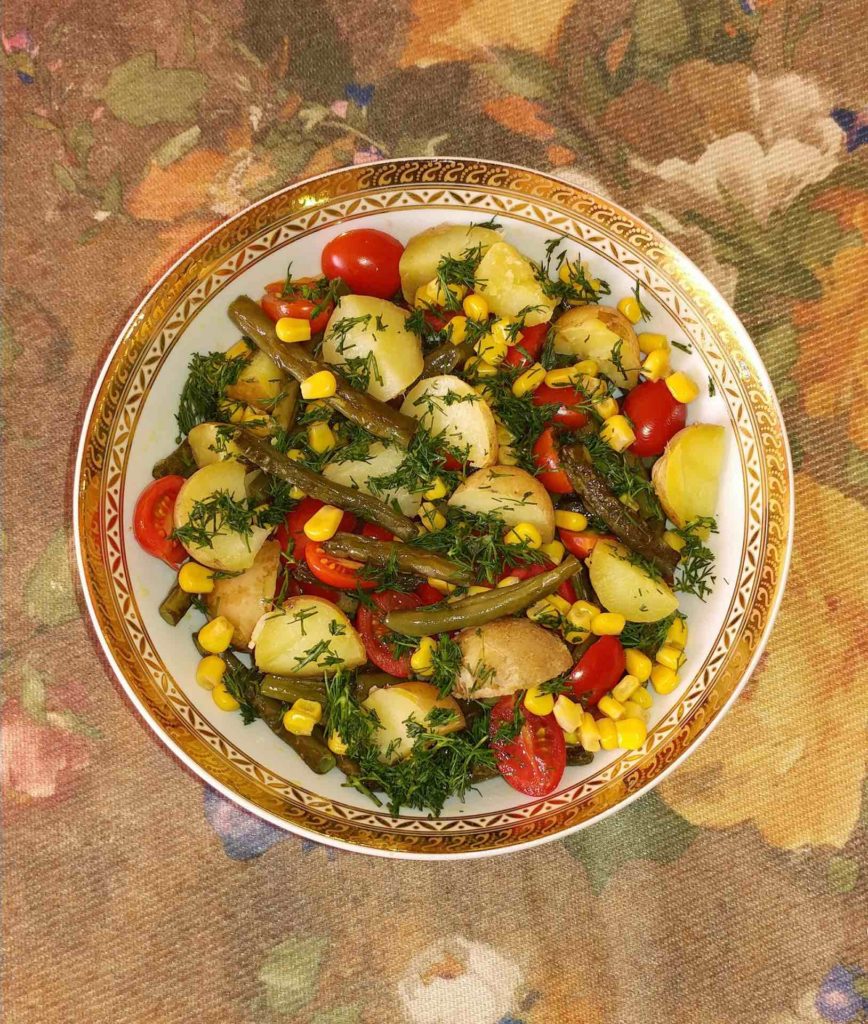
This combination of potatoes and green beans is one of my favourite dishes.
Ingredients
- 2 potatoes, quartered
- 1/4 cup olive oil
- 1/2 tsp. salt
- 1/8 tsp. garlic powder, ground mustard and pepper
- 6 fresh green beans, cut in half
- 4 cherry tomatoes, chopped
- 1 cup corn cooked
- 1 spoon fresh dill
How to make it
- Place the potatoes in a large saucepan; add water to cover. Bring to a boil. Cook, uncovered, for 10 minutes. Meanwhile, in a large bowl, whisk the oil and seasonings.
- Add the green beans to potatoes; return to a boil. Cook for 3-5 minutes or until the vegetables are tender.
- Drain; combine with the dressing, cooked corn, chopped cherry add fresh dill.
- Serve warm.
Bon appetite!
The Church of Putin: Inside The Cathedral of Russian Armed Forces – in pictures
By Ruby Goldenberg
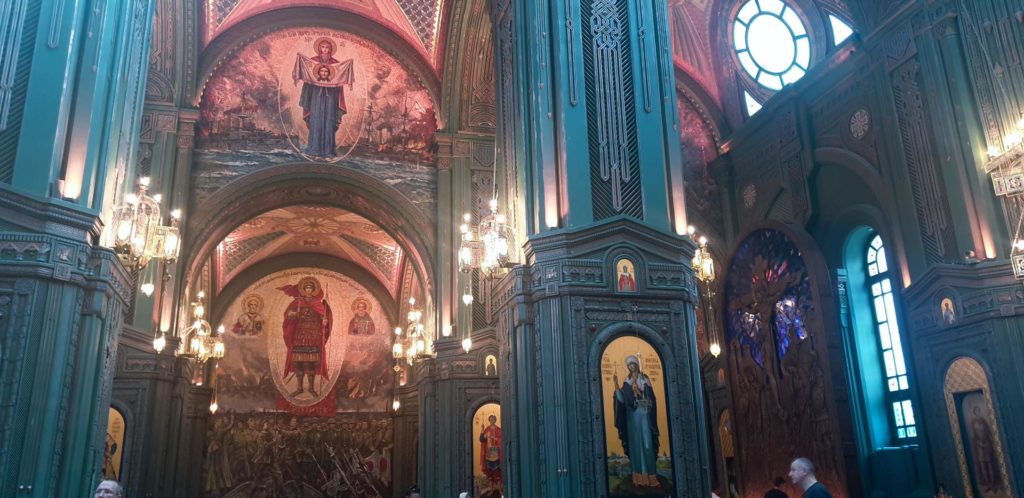
Travel with Ruby Goldenberg to the peculiar Cathedral of Russian armed forces.
News in March 2021 you may have missed
By Adrian Liberto
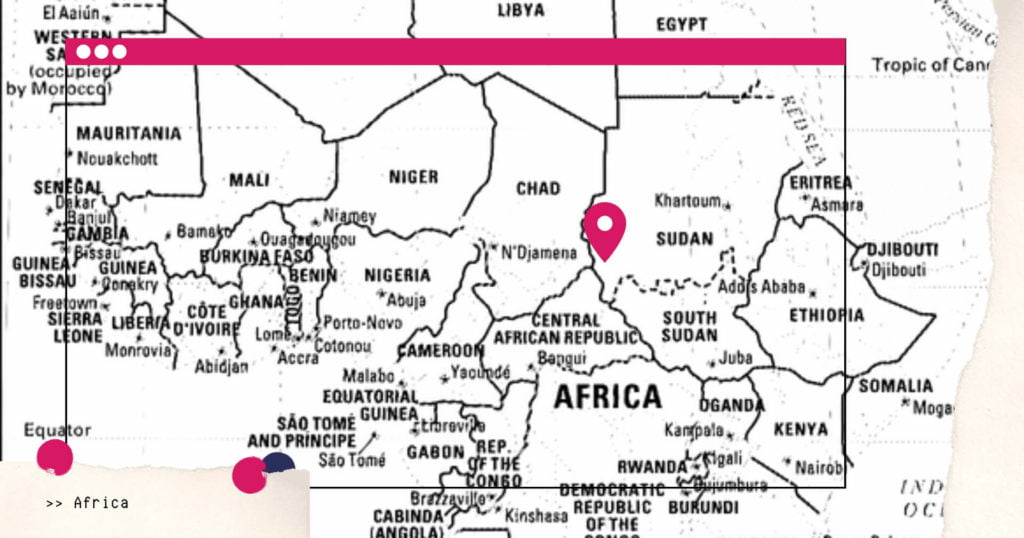
Read this article in Italian (Leggi questo articolo in italiano) →
AFRICA
02.03.21: Nigeria. The school girls who were abducted on February 26 were released after negotiations. The government insists that no ransom was paid.
03.03.21: Senegal. The arrest of opposition candidate Ousmane Sonko has sparked violent protests in Dakar. Sonko has been charged with rape and making threats, accusations he claims are politically motivated.
04.03.21: Ethiopia. The United Nations Humanitarian Chief, Mark Lowcock, denounced the Eritrean armed forces for carrying out a “campaign of destruction” in Tigray province and he demanded that they leave the area immediately. The army is accused of atrocities including murder and sexual violence against Tigray civilians.
05.03.21: Somalia. At least 20 people were killed and many others injured when a suicide car bomb exploded by a restaurant in the capital Mogadishu. No one has as yet claimed responsibility.
07.03.21: Equatorial Guinea. An explosion in a dynamite storage facility in Bata has killed scores of people and wounded hundreds of others. President Teodoro Obiang immediately blamed the blast on negligence.
10.03.21: Ivory Coast. Prime Minister Hamed Bakayoko died a few days after his 56th birthday while receiving treatment for cancer in Germany.
11.03.21: Nigeria. Another mass kidnapping occurred, this time in Kaduna State, as gunmen raided a higher education establishment. The army managed to rescue 180 students and staff, but up to thirty male and female students may still be missing.
15.03.21: Niger. Militants slaughtered dozens of civilians as they were returning home from a shopping trip in a guarded convoy. A nearby village was also attacked and in all, 58 people were killed. The incident happened in the Tillabery region near the borders with Mali and Burkina Faso, which is prone to attacks by Islamist terrorists.
15.03.21: Mali. Islamic extremists attacked an army base in the Town of Tessit near the border with Burkina Faso and NIger killing 33 soldiers and wounding many others.
17.03.21: Tanzania. President John Pombe Magufuli died aged 61. His heavy-handed reforms earned him the nickname “the bulldozer”. However, he proved less dynamic when it came to dealing with COVID-19 as he failed to take the pandemic seriously, even encouraging people to go to the churches and mosques to pray. Opposition politicians are claiming he died of the virus, but this has not been confirmed.
20.03.21: Republic of the Congo. On the eve of the presidential elections, doctors confirmed that the leading opposition candidate, Guy Brice Parfait Kolelas, has COVID-19. A day earlier, the politician was filmed in his hospital bed as he briefly took off his oxygen mask to announce that he was fighting death.
21.03.21: Republic of the Congo. The main opposition candidate, Guy Brice Parfait Kolelas, died of COVID-19 just as voting started for the presidential elections.
22.03.21: Niger. Mohamed Bazoum has been confirmed the winner of February’s presidential election runoff by the country’s top court. He will be sworn in on April 2.
23.03.21: Egypt. The Ever Given, a 400-metre-long ship has been blown around by strong winds in the Suez Canal causing it to jam between the two banks. The wedged-in vessel has blocked all maritime traffic through the waterway and is unlikely to budge easily, with estimates ranging from a few days to a few weeks.
23.03.21: Republic of Congo. President Denis Sassou Nguesso has been re-elected with 88% according to initial results. He has already been in power for 36 years and the outcome was not a surprise owing to his undermining of opposition parties.
26.03.21. Egypt. A train crashed into another when a passenger activated the emergency breaks in the first train. At least 32 people died, while scores have been injured, some seriously.
28.03.21: Mozambique. Security forces stormed a hotel and neighbouring areas in the northern town of Palma which had been under siege by Islamist militants since March 24. Hundreds of people were rescued, but dozens were killed during the operation, including many civilians.
29.03.21. Egypt. The Ever Given has finally been dislodged and shipping has resumed on the Suez Canal. The cost of the operation is a small fraction of what the delays have cost international trade.
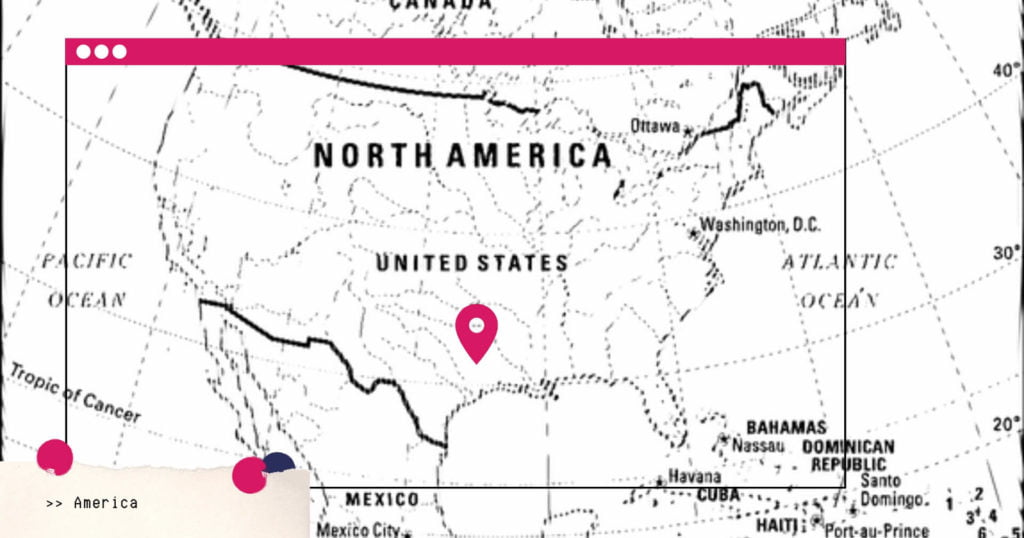
THE AMERICAS
01.03.21: USA. A painting by Winston Churchill, Tower of Koutoubia Mosque, which was painted in Marrakesh and gifted to US President Franklin D. Roosevelt, was sold by actress Angelina Jolie for $11.5 million.
01.03.21: Peru. Proceedings against disgraced Alberto Fujimori were officially opened to. The former president is accused of the forced sterilisation of thousands of women, mostly poor and indigenous, between 1996 and 2000.
08.03.21: Brazil. Former president Lula da Silva’s criminal convictions were quashed by a high court judge. All his political rights were also restored making it possible for the popular leftist politician to make a comeback.
13.03.21: Bolivia. Former interim president, Jeanine Áñez, and a number of the ministers who had supported her, were arrested after having been charged with orchestrating the coup that ousted President Evo Morales in 2019.
17.03.21: USA. The Russian ambassador in Washington has been recalled to Moscow to discuss the recent comments by President Biden subsequent to a report which linked Putin to election meddling in the US. Biden said that Putin would “pay” for the interference and confirmed he considered the Russian president a “killer”. The recall was billed as an attempt to avoid the “irreversible deterioration” of US-Russian relations.
17.03.21: USA. A 21-year-old self-professed sex addict was charged with the murder of eight people in gun attacks on three separate Asian massage parlours. Robert Aaron Long said his motivation was targeting sources of temptation.
23.03.21: USA. A 21-year-old man was charged with ten counts of murder after a mass shooting in a grocery shop in Boulder, Colorado.
25.03.21: USA. State Governor Brian Kemp signed a new law which critics, including President Biden, claim clearly aims to make it harder for black people to vote. The law even makes it illegal to offer food and water to people queuing to vote.
30.03.21: Brazil. Jair Bolsonaro’s attempts to tighten his grip on power with the sacking of his Defence Minister backfired when the all three heads of the respective armed forces resigned en masse. This, added to his disastrous handling of the coronavirus pandemic, is leaving the president in a very precarious position.
30.03.21: Brazil. Jair Bolsonaro’s attempts to tighten his grip on power with the sacking of his Defence Minister backfired when the all three heads of the respective armed forces resigned en masse. This, added to his disastrous handling of the coronavirus pandemic, is leaving the president in a very precarious position.
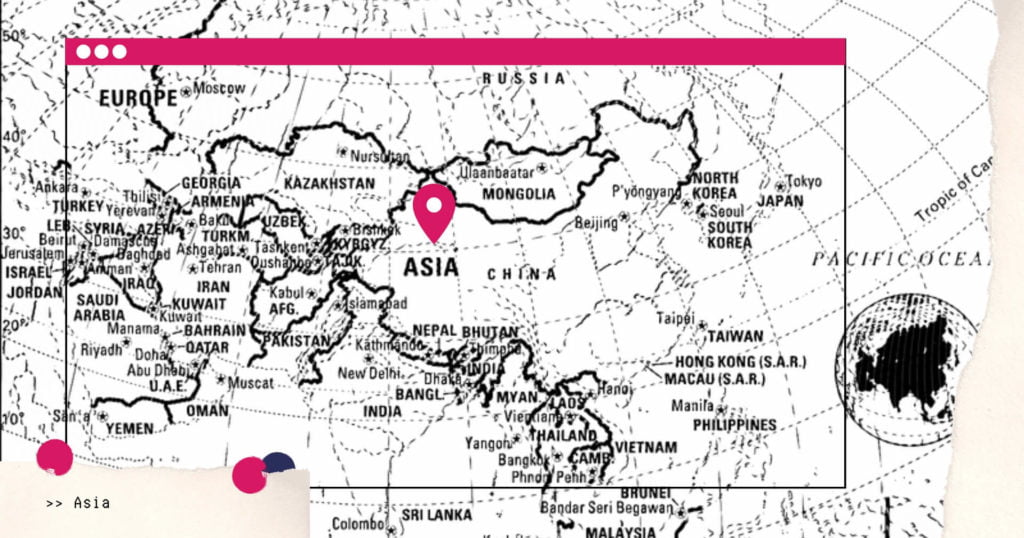
ASIA
03.03.21: Myanmar. Today was the deadliest since the military coup on February 1. Forces shot at unarmed protesters killing 38 civilians, including four children.
05.03.21: Iraq. Pope Francis has started a dangerous historic three-day visit with calls for peace and respect of minorities.
07.03.21: Yemen. Several people were killed and scores were injured in a fire in a Houthi-run migrant detention centre in the capital Sanaa.
13.03.21: Sri Lanka. The government announced plans to close more than 1,000 Islamic schools and ban the wearing of the burka in public.
16.03.21: Israel. Archaeologists announced the discovery of dozens of Dead Sea scrolls with biblical references in a cave dating back to the 1st century C.E. The last find was over 60 years ago.
22.03.21: China. Ten Europeans were slammed with sanctions in a tit-for-tat move by Beijing. The US, UK, EU and Canada had imposed sanctions on China earlier in the day in the wake of mounting evidence of human rights abuses of Uyghur Muslims in Xinjiang Province. China denies the claims and called the action taken against it “gross interference” and a flagrant breach of international law.
23.03.21: Bangladesh. A devastating fire razed a Rohingya refugee camp displacing tens of thousands of people and possibly killing a few hundred. So far 15 bodies have been found, but about 400 people are still unaccounted for.
26.03.21: Israel. Final results of the elections confirm that neither of the two main parties has a sufficient majority to form a government. A coalition government would also prove to be very difficult owing to the political makeup of potential “kingmakers”. Prime Minister Benjamin Netanyahu’s right-wing Likud party and parties openly willing to support him won 52 seats in the 120-seat Knesset, while staunch adversaries gained 57.
26.03.21: Bangladesh. Celebrations for the country’s Golden Jubilee turned sour as demonstrations broke out in protest at a State visit by Indian Prime Minister Narendra Modi. At least four people were killed in Chittagong as police fired rubber bullets on rioters.
30.03.21: Myanmar. The country reached another grim milestone as the death toll of those killed by the military surpassed 500. Some of those slaughtered were children.
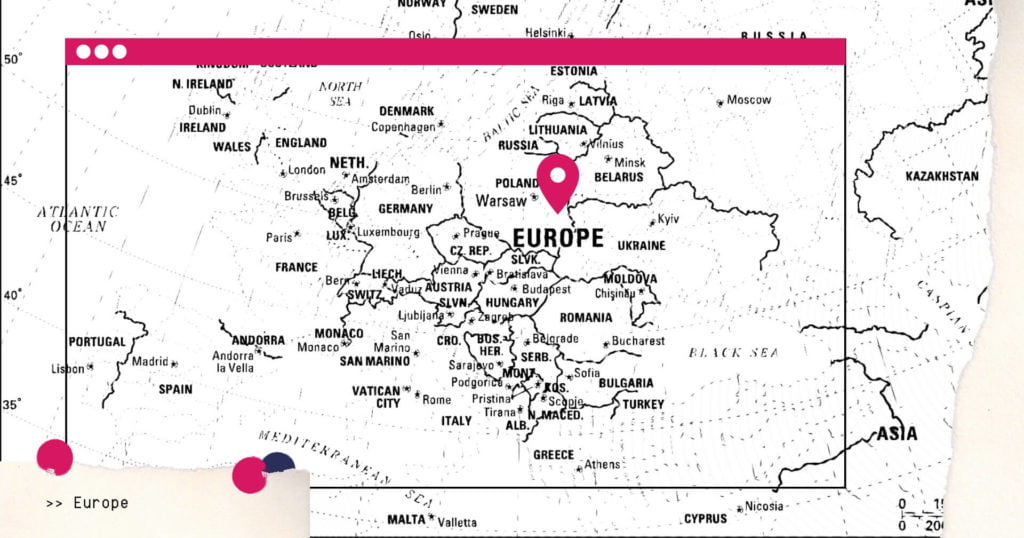
EUROPE
01.03.21: France. Scandal-ridden Ex-President Nicolas Sarkozy was sentenced to a prison term of three years (two of which suspended) for corruption in relation to attempts to bribe a magistrate dealing with a 2014 case he was implicated in.
08.03.21: Switzerland. The result of a referendum on whether people should be allowed to wear face coverings in public, favoured a ban by a 51.2% to 48.8% vote. The prohibition will cover burqas and niqabs, as well as masks worn during protests.
09.03.21: Spain. The European Parliament has voted to strip former Catalan leader Carles Puigdemont and two other Catalan separatist MEPs of their right to diplomatic immunity. Spanish authorities will now be in a stronger position to pressure for their extradition from Belgium in order to make them face charges relating to the illegal 2017 referendum.
11.03.21. Italy. An outstanding mosaic that once graced one of Emperor Caligula’s ships has been returned to Italy. The richly patterned masterpiece, which had been smuggled out of Italy after World War II, was discovered in New York four years ago in the possession of an art dealer who was using it as a coffee table top.
15.03.21: The Vatican. A statement approved by Pope Frances said that the Catholic Church would not bless same-sex unions claiming that the church could not bless sin.
18.03.21: The Netherlands. Prime Minister Mark Rutte has secured a fourth consecutive term in the elections with a comfortable win. He has already begun negotiations to form a coalition government.
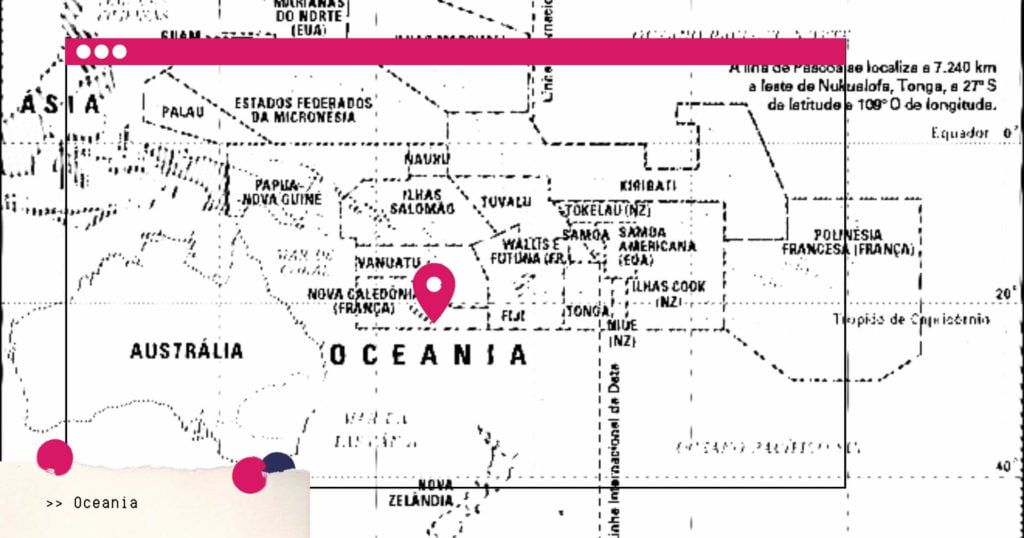
OCEANIA
03.03.21: Australia. The chairman of mining company Rio Tinto, Simon Thompson, has accepted that he was “ultimately accountable” for the destruction of a revered 46,000-year-old rock Aboriginal shelter in Western Australia. Rio Tinto destroyed the site in order to mine iron ore. He confirmed that he would not be seeking re-election.
22.03.21: Australia. Floods in Western Sydney have continued to wreak havoc and cause mass evacuations as waters continue to rise. Prime Minister Scott Morrison admitted the situation is of “greatest concern”. So far there have been no casualties, although wildlife and livestock have not been so lucky.
